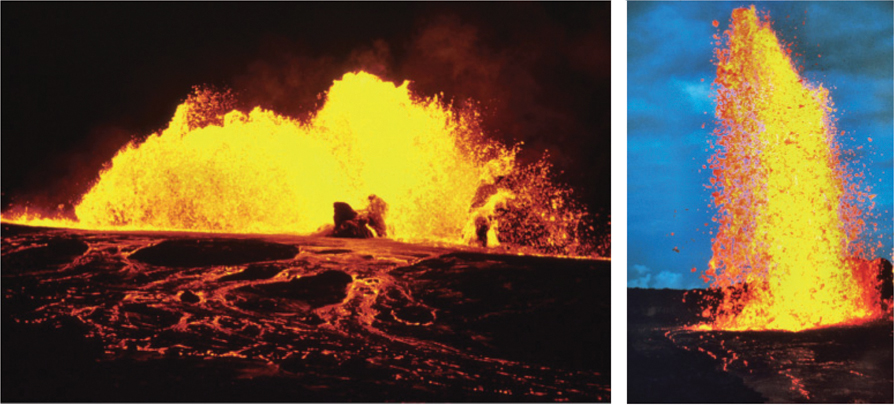CHAPTER 10Geothermal Energy – Power from the Deep
When planet Earth came into being more than four billion years ago, its form was considerably different from what it is now. At that time Earth was in a partially melted state. It was not until about three billion years ago that the temperature of the Earth's surface dropped to below 100 °C and the Earth's crust gradually began to harden.
It may not seem like it in the depths of a northern winter, but today our planet is anything but a cold ball. About 99% of the Earth is hotter than 1000 °C and 90% of the rest has temperatures of over 100 °C. Fortunately for us, these high temperatures are almost exclusively found in the Earth's interior. Every so often volcanoes produce impressive eruptions spewing molten matter from depths of up to 100 km. Different geothermal energy technologies enable us to tap the heat of the Earth's interior in a controlled way so that we can satisfy some of our heat and electricity demands (Figure 10.1).

Figure 10.1 Volcanic eruptions bring the energy from the Earth's interior to the surface in a spectacular fashion. Source: D.W. Peterson and R.T. Holcomb, US Geological Survey.
10.1 Tapping into the Earth's Heat
The Earth itself is made up of concentric bands (Figure 10.2) comprising the core, the mantle, and the crust. The Earth's core has a diameter of around 6900 km (4290 mi). A differentiation ...
Get Renewable Energy and Climate Change, 2nd Edition, 2nd Edition now with the O’Reilly learning platform.
O’Reilly members experience books, live events, courses curated by job role, and more from O’Reilly and nearly 200 top publishers.

